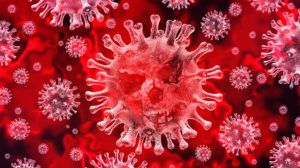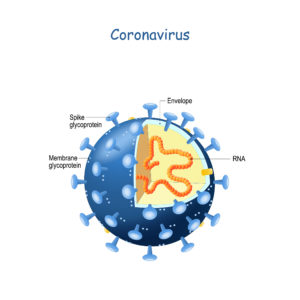Coronavirus (NOT COVID-19) – What can you do? Part 2 (Sambucus)


Over the course of the next few blog posts my intention is to provide you with a discussion and the evidence of the effective substances you can use to protect yourself, things that are easily accessible.
Will a vaccine come to the rescue?

It is certain that many of us are holding out hope that there will appear a potent and effective vaccination against these new viruses that we continue to be confronted with.  However, given the highly recombinant nature of these viruses it is unlikely that an effective vaccine is forthcoming.
However, given the highly recombinant nature of these viruses it is unlikely that an effective vaccine is forthcoming.
Recombination is a naturally curing process where a virus is able to rearrange its genetic material creating a constantly evolving and shifting viral profile.
This, in combination with the fact that there are no adequate antivirals against the coronavirus places the burden on ourselves as individuals to protect ourselves. And of course, we know all about the hygienic practices that are necessary to eliminate casual exposure. However, this is not enough! We need to make sure that our immune systems are significantly supported.
Out with the new and in with the old?
After SARS and MERS researchers began investigating natural compounds once again proving that sometimes what has been around for thousands of years is more effective than what we can create in a lab.
How does plant medicine stack up?
CRITICAL NOTE: COVID-19 is a novel coronavirus and seems to break all the rules so please, do not misunderstand this to be applicable to COVID-19!!
Well, in a nutshell, quite impressively!
Certain plant metabolites, specifically polyphenols, have been proven to be effective antimicrobials. Common characteristics about these polyphenols is that they act very similar to our own cellular immune responses which include reactive oxygen species and defensins, which we utilized protect us against invading microbes.
Different plant species contain different polyphenols making them active against different pathogens. For example Rhodiola rosea has been proven to have antiviral activity against Coxsackie virus. Nigella sativa (black cumin seed) shows antimicrobial activity against his E. coli as well as other bacteria.
Some other compounds within Nigella sativa such as saponins, alkaloids, and flavonoids share similarities with other antiviral chemicals.
Let's take a closer look at Sambucus Nigra (elderberry)...
Sambucus nigra is successful at inhibiting influenza A and B viruses. But how does it do this? Among other things Sambucus contains quercetin, which has significant antiviral activity.
In a 2014 study Sambucus nigra exhibited significant antiviral effects against Infectious Bronchitis Virus (IBV) in chickens. This study is obviously important to chickens but its importance extends far beyond our feathered friends who give SO MUCH to us.
It is significant during this current coronavirus pandemic because these coronaviruses are zoonotic viruses (they originate from an animal source). IBV is a pathogenic coronavirus. In this study the researchers were determined to uncover the mechanisms by which Sambucus nigra was able to completely inhibit this particular coronavirus. In their research they applied the Sambucus nigra and various stages of the infection. The researchers discovered that in cells pretreated with Sambucus nigra combined with treatment of the cells post-infection had a synergistic effect of reducing viral titers in the cells three orders of magnitude. This was much more effective than treating once the infection had occurred.
What have we learned from this study? It is necessary to be taking Sambucus nigra before infection occurs and then to continue taking it during infection (if you even get infected). In this way we can dramatically decrease the level of viral titers which contribute to the overall sickness associated with these coronaviruses.
How does Sambucus nigra perform its magic?
Viruses are composed of various parts; nucleic acid in either a DNA or RNA form but often both, a protein coat which helps to protect the nucleic acids. Some viruses have an envelope with fat and protein molecules. When a virus is in its infective state the virus particle is called the "virion".
Sambucus nigra was also able to interrupt the envelopes of virions (infective particles). Now this is pretty exciting! Basically, Sambucus nigra is able to punch holes in the protective envelope of infective virions rendering them noninfectious.
Essentially, polyphenols within the Sambucus fruit "punch holes" in the protective envelope around these viruses, which leads the researchers to suggest that Sambucus nigra extract may in fact have much broader effects against other envelope viruses such as hepatitis B, hepatitis C, HIV, and influenza.
Another compound found in plant extracts shown to have antiviral activity are lectins. Sambucus nigra contains three lectins which may help decrease coronavirus infection.
There may in fact be other antiviral compounds within Sambucus nigra fruit that are yet undiscovered.
These researchers discovered that complete inhibition occurs when pretreatment and postinfection treatment are used in combination.
So, how do you take Sambucus nigra?
- Make certain you are purchasing a quality product (Gaia Herbs & Herb Pharm, etc.)
- Make certain it is a glycerite of the sambucus fruit.
- Take the correct dose; 1 teaspoon three times a day preferably away from food. Yes, you heard me correctly, 1 teaspoon three times a day in water.

Yes, you heard me correctly
1 teaspoon three times a day!
Please consult with your physician before starting any herbal medicine!
How to make a natural form of hand sanitizer?
Mix 2/3 cup 99% rubbing alcohol with 1/3 cup aloe vera gel and put in a empty pump bottle.
For those of you who would like to read the article/s...

















Hi Ron,
I make an elderberry concentrate tea from Frontier brand dried elderberries. Am I getting the same antiviral properties from Sambucus Nigra in this form?
Thank you for sharing your expertise!
Lizzie
Hi Lizzie;
Sorry, no. The best form is going to be a concentrated glycerite.
Nothing really holds a candle to the glycerite.
Ron
Ron….Thank you again for sharing your knowledge and research findings and ideas with us! I am sharing the links to the blog and individuals are asking for clarification on which sambucus product to use. Will you clarify what you mean by “make certain it is a glycerite of the sambucus fruit” ? Does that translate to using one that has glycerine rather than alcohol?
with gratitude,
Michele Wyzga
Hi Michele;
Yes, the glycerite is a glycerine base with no alcohol.
Ron
Thank you so much, Ron.
Boosting our immune system is indeed the best strategy and I am so very grateful for your sharing of this information.
Domenic Lopez
You are very welcome! Stay tuned for more:)
Ron
You are amazing Ron. Thank you for sharing this important information with us. We are lucky to be the recipients of your knowledge, passion and hard work.
Arlene
I’m blushing!
There is information out now that says the continued use of elderberry after 2 days of illness can induce a cytokine storm. They are recommending to avoid immune boosters after you have been sick for two days as these can bring on a cytokine storm. The following is copied. I don’t know the accuracy of this. Just sharing information.
Here is a list of herbs that help to COMBAT Cytokine Storm (and if you keep getting more and more sick, these are the herbs to INCREASE), basically the good guys:
-Turmeric
-Yarrow
-Cayenne
-Garlic
-Horseradish
-Red Raspberry
-Skullcap
-St. Johns Wort
-Tea Tree Oil
-Vitamin C (lots of it!)
Now… here is a list of herbs to STOP taking if an illness is starting to escalate to a BAD stage, basically the bad guys:
-Elderberry
-Echinacea
-Honey (any sugar of any kind makes it worse)
-Chocolate
-Colloidal Silver
-Kimchee
Hi Deborah;
Thanks for your concerns and suggestions. Can you share your source for this?
Maybe the possible concerns lie in a fundamental misunderstanding of what actually causes a cytokine storm.
A cytokine storm is stimulated by an innate immune response to virus or endotoxins from bacteria or some other pathogen. From a cursory understanding it seems intuitive that adding an herb that stimulates an immune response could potentially contribute to the potential of a cytokine storm. Make sense to me…on the surface. However, let’s dive deeper. Botanicals are not single molecule drugs but composed of hundreds of constituents that work in synergy. You cannot utilize the reductionistic view applied to a single drug to a botanical, which is synergistic web of integrating constituents that in turn cause a synergistic web of interactions in the body.
When we take Sambucus nigra as an example we see that some constituents are focusing on the immune system of the host but others are focused on the virus. This particular study uncovered one of the underlying mechanism, namely that it damages the membranes of the virons rendering them non-infectious. When you decrease the viral load you calm down the immune response.
Also, I presented your question to a colleague of mine who is one of the leading botanical medicine experts in the field of naturopathic medicine. This is a direct quote from him;
“I agree that the medical literature shows no such problem, quite the opposite, including in two human clinical trials in influenza. If it caused cytokine storm we should have seen increased mortality in those studies and we saw decreased mortality.”
“There are many, many molecules involved in an immune response to a virus, and it is not like any herb turns them all on max or something. In fact, it is almost certain that they block certain harmful pathways while upregulating beneficial ones. A student at Bastyr did a study on Lomatium showing that Lomatium blocks CXCL10 production in response to influenza, which is a key cytokine that contributes to cytokine storm. So who knows for sure with Sambucus but I bet it has a mix of immune effects that lead to less chance of cytokine storm while improving antiviral immune activity, as well as the direct antiviral properties.”
__________________________________________
In case you are interested in some light reading:) Here are the references.
Kinoshita, E., et al., Anti-influenza virus effects of elderberry juice and its fractions. Biosci Biotechnol Biochem, 2012. 76(9): p. 1633-8.
Akram, M., et al., Antiviral potential of medicinal plants against HIV, HSV, influenza, hepatitis, and coxsackievirus: A systematic review. Phytother Res, 2018. 32(5): p. 811-822.
Hawkins, J., et al., Black elderberry (Sambucus nigra) supplementation effectively treats upper respiratory symptoms: A meta-analysis of randomized, controlled clinical trials. Complement Ther Med, 2019. 42: p. 361-365.
Roxas, M. and J. Jurenka, Colds and influenza: a review of diagnosis and conventional, botanical, and nutritional considerations. Altern Med Rev, 2007. 12(1): p. 25-48.
Tiralongo, E., S.S. Wee, and R.A. Lea, Elderberry Supplementation Reduces Cold Duration and Symptoms in Air-Travellers: A Randomized, Double-Blind Placebo-Controlled Clinical Trial. Nutrients, 2016. 8(4): p. 182.
Zakay-Rones, Z., et al., Inhibition of several strains of influenza virus in vitro and reduction of symptoms by an elderberry extract (Sambucus nigra L.) during an outbreak of influenza B Panama. J Altern Complement Med, 1995. 1(4): p. 361-9.
Krawitz, C., et al., Inhibitory activity of a standardized elderberry liquid extract against clinically-relevant human respiratory bacterial pathogens and influenza A and B viruses. BMC Complement Altern Med, 2011. 11: p. 16.
Shahsavandi, S., M.M. Ebrahimi, and A. Hasaninejad Farahani, Interfering With Lipid Raft Association: A Mechanism to Control Influenza Virus Infection By Sambucus Nigra. Iran J Pharm Res, 2017. 16(3): p. 1147-1154.
Zakay-Rones, Z., et al., Randomized study of the efficacy and safety of oral elderberry extract in the treatment of influenza A and B virus infections. J Int Med Res, 2004. 32(2): p. 132-40.
Porter, R.S. and R.F. Bode, A Review of the Antiviral Properties of Black Elder (Sambucus nigra L.) Products. Phytother Res, 2017. 31(4): p. 533-554.
Fal, A.M., et al., Antiviral activity of the “Virus Blocking Factor” (VBF) derived i.a. from Pelargonium extract and Sambucus juice against different human-pathogenic cold viruses in vitro. Wiad Lek, 2016. 69(3 pt 2): p. 499-511.
Barak, V., T. Halperin, and I. Kalickman, The effect of Sambucol, a black elderberry-based, natural product, on the production of human cytokines: I. Inflammatory cytokines. Eur Cytokine Netw, 2001. 12(2): p. 290-6.
Ron
Hello Admin
I am a pharmacist, Brazilian, specializing in clinical toxicology.
Researching the possible action of the Sambucus nigra plant (known in Brazil as Sabugueiro), I saw your article.
I have been doing a lot of research on the use of medicinal plants to strengthen the immune system, in the face of COVID-19.
Congratulations on your article, especially for this argument.
It is very correct.
Simplified example would be the use of thymomodulin. This substance acts by stimulating the immune response, while preventing the cytokine storm.
Ron,
Do you have the source article information for the 2014 study on Sambucas nigra that you mention herein?
Thank you!
Pat Tschannen, MPT
Hi Patricia;
I will update the post and add the article so you can all read the source.
Ron